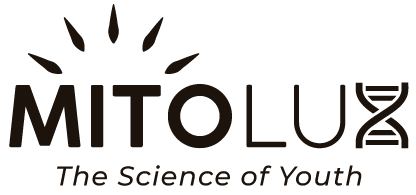Red light therapy (RLT) has gained traction in the world of wellness and health optimization. Often praised for its potential benefits ranging from skin health to pain relief, it's essential to understand the correct exposure levels to obtain the best outcomes. In this article, we'll dive deep into understanding the ideal exposure to red light therapy for various purposes.
Understanding Exposure: mW/s and Millijoules
Before delving into the specific dosages required for different purposes, it's crucial to understand the measurement units: mW/s (milliwatts per second) and millijoules (mJ). mW/s measures the power output of the light, while millijoules represent the energy dose delivered over a specific time.
The conversion between the two is given by:
Energy (mJ) = Power (mW) x Time (s)
This means if you're exposed to a light with a power output of 100mW for 10 seconds, you receive a dose of 1,000mJ.
Skin Health and Rejuvenation
Red light therapy has shown potential in improving skin complexion and building collagen. For skin health, a dose range between 4 to 6 Joules per square centimeter is often recommended. In a study published in the Journal of Photochemistry and Photobiology, subjects experienced improved complexion and skin feeling after being exposed to these dosage levels (source).
Hair Growth
Several studies indicate RLT's potential in promoting hair growth. Typically, doses around 4-6 Joules per square centimeter, applied several times a week, have shown benefits. One study in the Lasers in Surgery and Medicine journal reported increased hair density following RLT exposure at these dosages (source).
Inflammation and Pain Relief
For reducing inflammation and pain, dosages tend to be higher. Depending on the condition's severity and depth, 20-30 Joules per square centimeter might be needed. A research article from the Journal of Photochemistry and Photobiology highlighted reduced pain and faster healing times in patients undergoing RLT in this range (source).
Deep Healing: Muscle Recovery and Wound Repair
For deeper tissue healing and muscle recovery, even higher doses are suggested. Some studies recommend dosages between 50-100 Joules per square centimeter. The Photomedicine and Laser Surgery journal published findings showing improved muscle recovery after exercise with RLT doses within this range (source).
Vitamin D Levels and Red Light Therapy
It's worth noting that while red light therapy offers various benefits, it does not significantly impact vitamin D synthesis. Vitamin D production in the skin is primarily influenced by UVB exposure. Therefore, RLT and vitamin D synthesis function through different mechanisms. There's no direct comparison in values of vitamin D levels relative to RLT exposure.
Conclusion
Red light therapy promises a slew of benefits, but just like any other therapy, understanding the correct dosages is vital. The exposure levels differ based on the targeted benefit, whether it's skin health, hair growth, or deeper tissue healing. By keeping the aforementioned guidelines and scientific evidence in mind, one can hope to harness RLT's maximum potential.
Always consult a healthcare or RLT professional before starting a red light therapy regimen.
Disclaimer: This article is for informational purposes only and does not constitute medical advice. Always consult with a healthcare professional for medical concerns.


